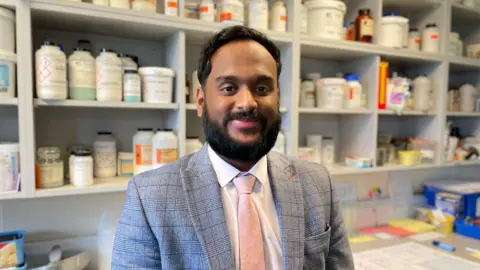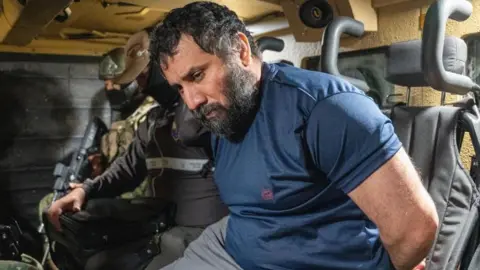- Climate
our guide to guest drivers and car insurance
时间:2010-12-5 17:23:32 作者:Science 来源:Columnists 查看: 评论:0内容摘要:One book that was originally part of the curriculum and then pulled for unexplained reasons is “My Rainbow,” co-written by Delaware state Rep. DeShanna Neal and daughter Trinity.One book that was originally part of the curriculum and then pulled for unexplained reasons is “My Rainbow,” co-written by Delaware state Rep. DeShanna Neal and daughter Trinity.
, a decision that has beenby a federal judge, pending a lawsuit.

Trump said Wednesday that Harvard, whose current student population is made up of more than a quarter of international students, should limit that percentage to about 15%.“I want to make sure the foreign students are people that can love our country,” Trump told reporters in the Oval Office.The action on Chinese students renews a priority from Trump’s first administration to clamp down on academic ties between the United States and China, which Republicans have called a threat to national security. In April, Trump ordered the Education Department to ramp up enforcement of a federal rule requiring colleges to disclose information about funding from foreign sources.

During his first term, the Education Department opened 19 investigations into foreign funding at U.S. universities and found that they underreported money flowing from China, Russia and other countries described as foreign adversaries.Hours before Rubio announced the change, Eastern Michigan University announced it was ending engineering partnerships with two Chinese universities, responding to Republican pressure. Rep. John Moolenaar, the Republican chair of the House Select Committee on the Chinese Communist Party, recently urged Eastern Michigan and other universities to end partnerships with Chinese universities.

Around 1.1 million international students were in the United States last year — a source of essential revenue for tuition-driven colleges. International students are not eligible for federal financial aid. Often, they pay full price.
Northeastern University, which has more than 20,000 international students, has set up “contingency plans” for those who hit visa delays, said spokesperson Renata Nyul, without elaborating.The balance is choosing participants sick enough to qualify but not so sick they have no chance.
“There’s a tremendous number of patients who would be very willing, very willing to do this,” said Dr. Silke Niederhaus of the University of Maryland, who isn’t involved in xenotransplant research but watches it closely.Niederhaus became a kidney transplant surgeon because around her 12th birthday, one saved her life. That kidney lasted three decades. When it failed, it took five years to find another. So she understands the draw of pig research, and urges people to learn their odds of getting a human kidney before volunteering.
If they’re younger, healthier or have a living donor, “I would probably say go with what’s known and what’s proven,” Niederhaus said. But if they’re older and dialysis is starting to fail, “maybe it’s worth taking the risk.”AP video journalist Shelby Lum contributed to this story.
- 最近更新
- 2025-07-07 08:41:25Can divided European powers help end Israel’s war on Iran?
- 2025-07-07 08:41:25Ex-Argentinian President Cristina Fernandez de Kirchner given house arrest
- 2025-07-07 08:41:25Ending the ‘infinite workday’
- 2025-07-07 08:41:25When top executives work remotely, it becomes more difficult to drag everyone else to their desks
- 2025-07-07 08:41:25Russia-Ukraine war: List of key events, day 1,215
- 2025-07-07 08:41:25Thailand says ‘progress made’ in border dispute talks with Cambodia
- 2025-07-07 08:41:25Shooting victim Colombia Senator Uribe Turbay critical after brain surgery
- 2025-07-07 08:41:25In Brazil, a fight over offshore drilling tests Lula’s climate ambitions
- 热门排行
- 2025-07-07 08:41:25crashed into a San Diego neighborhood
- 2025-07-07 08:41:25Mid-tier UK law firms hand big pay rises to junior lawyers
- 2025-07-07 08:41:25SSA's earnings test calculator
- 2025-07-07 08:41:25Panama declares emergency in western province after deadly pension protests
- 2025-07-07 08:41:25AOLCrest Whitestrips are less than $30 for Amazon Prime Day
- 2025-07-07 08:41:25Russia-Ukraine war: List of key events, day 1,215
- 2025-07-07 08:41:25How the Fed rate affects your student loans
- 2025-07-07 08:41:25World-class rounds await a hop, skip and a putt away from the Scottish capital
- 友情链接
- Palestinians see plan to push them from land as Israel builds national park Tigers, jaguars and elephants flee cartel violence in Mexico’s Sinaloa Barcelona’s Lamine Yamal signs new six-year contract Can you find these Palestinian cities? Cheer up, people of Gaza! You’ll get killed on a full stomach Israeli forces raid foreign exchange shops in occupied West Bank; one dead ‘Betrayal’ or ‘win-win’?: Britain’s EU deal reopens old wounds US Steel shares soar on Trump’s apparent blessing for deal with Nippon Merz: Israeli army’s actions no longer justifiable in fight against Hamas Have scientists discovered a new colour called ‘olo’? King Charles III warns, yet assures, as he opens Canadian parliament Silhouetted by fire, six-year-old girl survives Israeli attack in Gaza Liverpool parade car crash: What happened, and who the victims, suspect are Borders, ballots and boycotts How common is Israel’s use of human shields in Gaza and the West Bank? ECB’s Lagarde says euro could be viable alternative to US dollar Charles III to give ‘Speech from the Throne’ in Canada: What to know In Gaza, selling or serving food can get you killed Thunder-Timberwolves: SGA scores 40 as OKC win Game 4 in NBA West finals Oil riches are on the horizon as Suriname chooses its next government Cheer up, people of Gaza! You’ll get killed on a full stomach Congolese refugees in Burundi face starvation and violence amid aid cuts US pauses student visa processing amid plans to up social media vetting Photos: 3,000 ‘Smurfs’ – French town breaks world record Guess who India, Pakistan and Iran are all wooing? The Taliban War of words: Russia’s Medvedev rebukes Trump over Putin social media post Video: Malaysia calls for expanded Myanmar ceasefire at ASEAN Summit UN Security Council must renew the arms embargo on South Sudan Barcelona’s Lamine Yamal signs new six-year contract Why the future of Bangladesh’s Muhammad Yunus administration is uncertain
